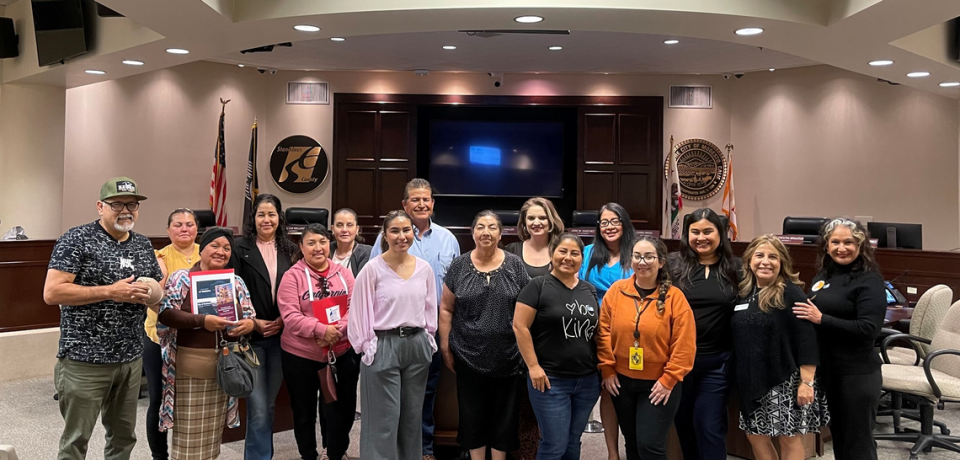Horchata vape juice? Modesto group worries big tobacco is targeting Latino communities
With vape juice flavors like horchata and agua fresca on the market, Modesto area residents worry that the tobacco industry is targeting the Latino community, which is already at risk for tobacco-related health problems.
The Stanislaus Tobacco Prevention Action Team (STPAT), a project partnered with the American Cancer Society Action Network, has been dedicated to raising awareness about tobacco use issues and advocating for local policies that benefit residents. This initiative is supported financially by the California Tobacco Prevention Program.
The organization provided training to a cohort of Spanish-speaking Modesto residents, empowering them to become advocates for their families and communities regarding tobacco use.
Lupe Delgado, STPAT senior tobacco control manager, said their focus is for the city to adopt a comprehensive tobacco retail license policy that will eliminate flavored tobacco, establish minimum retail price for tobacco products and restrict coupons and discounts for tobacco products.
A tobacco retail license would mandate that businesses selling tobacco in Modesto must acquire a local license each year to sell these products. This measure also ensures that retailers adhere to local, state and federal regulations.
Over 200 cities in California have implemented tobacco retail licenses, enabling local authorities to impose substantial penalties for non-compliance.
In essence, the program aims to reduce both the accessibility and affordability of tobacco, particularly for communities of color, which bear a disproportionate burden of its impacts, said Delgado.
According to the California Healthy Kids Survey from 2022-2023, 72% of 9th graders and 11th graders at Modesto City Schools have vaped tobacco or nicotine.
During the second training session, Delgado noted that e-cigarettes have influenced a demographic of teenagers who might otherwise have never consumed nicotine.
In 1991, cigarette usage stood at 27.5%, compared to the 6% in 2019 among high schoolers. However, the prevalence of e-cigarette use surged from 24.1% in 2015 to 32.7% in 2019.
Delgado said they also wanted to establish a program to enhance community understanding of local government, acquainting residents with their city council representatives and providing support for their tobacco retail license campaign, along with guidance on engaging with elected officials.
They conducted their first training on May 1 with 18 participants. Delgado was surprised at the number of people who signed up on the first day and that they wanted more sessions afterward.
“The goal is that the more we are able to empower our community residents, the more engaged they’re able to create local policies that will provide Modesto to be a fruitful healthier community of people overall engaging more in the political arena,” said Delgado.

Tobacco’s impact on the Latino community
One highlight of the program focuses on how the tobacco industry markets products to the Latino community by creating flavors tied to the culture.
Cancer is the leading cause of death among Latino people as they are also more likely to be diagnosed in later stages, be uninsured and experience serious financial hardship compared to their white counterparts.
The prevalence and concentration of tobacco retailers in an area correlate with increased tobacco usage and higher rates of young people beginning to smoke. These retailers are disproportionately located in low-income and communities of color, which already bear a disproportionate burden of tobacco-related illnesses such as diabetes, stroke, heart disease and cancer.
In Stanislaus County, cancer, heart disease, cerebrovascular diseases and diabetes are among the leading causes of death, all of which can be attributed to smoking.
Ernesto Martinez, one of the participants in the training, said his father smokes at least 80 cigarettes a day. When he’s nervous, it easily turns into 100.
He believes that the Latino community is targeted by the tobacco industry.
“Their goal is to make as much money as possible,” Martinez said.
Guadalupe Ramirez, another attendee, talked about the challenges of living with a smoker and the constant exposure to secondhand smoke. She agreed the Latino community’s vulnerability often results in disproportionate impacts from tobacco use.
Promoting advocacy
Delgado said she believes there’s a gap in the information about tobacco risks shared with Spanish speakers and rural communities, which compelled her to start the training program. She aims to empower more individuals with knowledge about local government, enabling them to advocate for causes they are passionate about, such as the tobacco retail license issue.
At their first session, the group toured the Modesto Chamber of Commerce. Delgado said the Modesto city hall staff were very welcoming.
At the Chamber of Commerce, the group conducted a practice session with city staff so participants could apply what they learned, such as talking within the allotted three minutes and filling out a form before speaking.
They were encouraged to share their personal experiences with tobacco use and that of their friends and family.
“My goal is really to continue to educate our community but empower them so that they can educate city council members,” Delgado said.


